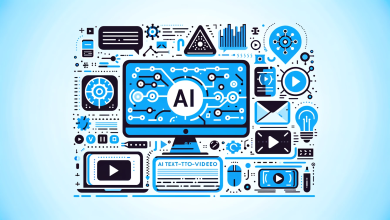
The conversation around artificial intelligence in construction has become increasingly loud. It’s often touted as a transformative force set to revolutionize the industry. However, amidst all the hype, many construction leaders are looking for more than headlines—they’re looking for actual clarity and tools that actually deliver results on the job site.
Artificial intelligence isn’t a miracle worker. It’s a tool—one with huge potential, but only when applied with purpose. After nearly two decades working shoulder-to-shoulder with commercial contractors, it’s become clear that success isn’t about the flashiest technology—it’s measured by what solves real problems, improves decision-making, and protects margins.
Start with the Fundamentals: Data Integrity
The secret to effective AI in construction lies in reliable data. Most firms struggle with this: operational and financial data is usually siloed across multiple platforms—from estimating spreadsheets to field logs and accounting systems—rarely integrated or clean. As a result, many decisions are still made based on gut feelings or outdated information.
Today’s most effective use of AI isn’t found on a jobsite. It’s happening in the back office, where operational data is being leveraged to produce better insights. When fed with accurate, structured information, AI can help uncover patterns and answer critical questions, such as identifying which projects consistently erode margin and why. The insights from these systems can surface hidden inefficiencies in overbilling, labor overruns, or equipment misallocation, enabling real-time course corrections.
However, none of this is possible without a solid data infrastructure. That’s the place to start.
The Logical First Application: Estimation
Once data systems are aligned, estimating becomes the first high-impact use case for AI.
In small and mid-sized general contracting and trade firms, estimating is often manual and time-consuming. Tasks like counting takeoffs, referencing historical costs, and adjusting for changing scopes demand countless hours of labor. These are exactly the kind of functions AI excels at.
Modern AI estimating platforms are now capable of reading plans, quantifying scope, and generating base estimates. While human oversight remains essential to ensure top-quality insights, the gains in efficiency and consistency are difficult to ignore. The nature of the estimating role is evolving, not vanishing completely. However, those working in this area will need to upskill into areas like project leadership and client relationship management.
The firms still relying entirely on Excel and institutional memory will face an increasing risk of falling behind.
Design and BIM: What’s Coming Next
On the design side, Building Information Modeling (BIM) is also undergoing a transformation. AI capabilities are advancing rapidly, and soon, systems may be able to generate viable building designs from inputs like square footage, usage needs, and budget constraints.
This shift will not eliminate design professionals. However, it will render repetitive design tasks obsolete. Drafting-based roles are especially vulnerable. What the industry will demand instead are creative problem-solvers—professionals who can collaborate, innovate, and apply contextual knowledge that no algorithm can replicate.
The future of design in construction will favor those who embrace technology and lean into the change, not those who resist it.
Supporting the Field, Not Replacing It
One truth remains unshaken: AI is not a substitute for frontline leadership.
Instinct, experience, and relationship-building are the intangibles that machines cannot replicate. No algorithm can replace a superintendent’s eye for detail or a foreman’s ability to motivate a crew.
However, AI can enhance field leadership. From monitoring productivity and analyzing safety trends to identifying early risk factors across multiple sites, AI-enabled tools can offer invaluable support. In an era where leaders are being asked to manage more projects than ever, arming them with real-time insights can be a game-changer.
What AI Still Can’t Do
Despite the progress, the industry is far from fully autonomous job sites. Flashy demos of robotic bricklayers and AI-driven cranes might capture attention online, but they don’t address the biggest challenges most contractors face.
AI still struggles to:
- Interpret nuanced conversations with clients
- Navigate jobsite politics
- Build field team trust
- Manage morale during tough periods
These are and will remain deeply human functions that we as industry professionals need to continue to refine and optimize.
Practical Steps for Implementation
The question is not whether AI will matter, but how to deploy it effectively. Leaders in construction can take meaningful steps today:
- Audit the data environment. Systems must be integrated and reliable. Emailing spreadsheets back and forth won’t cut it.
- Start with one use case. Whether it’s estimating, project tracking, or reporting, pick a specific application to pilot, and focus on getting good in that one area.
- Invest in training. Success depends on people adopting new tools, which most teams are probably not familiar with. Leaders must provide hands-on education, ensuring that their team really understands the tool, instead of just handing out software licenses.
- Remain both curious and skeptical. Every AI initiative should deliver tangible improvements, whether in margin, efficiency, or reliability. If it doesn’t, it’s just noise. Flashy features mean little without real impact. Leaders should remain grounded in results and prioritize tools that solve actual problems over those that merely sound impressive.
The Real Opportunity: Accountability
Ultimately, AI reflects the systems it interacts with. In a chaotic company, it magnifies the disorder. In a disciplined environment, it accelerates performance.
The most critical term in this conversation isn’t “artificial intelligence.” It’s accountability. And that always starts with leadership, which will always be human.





